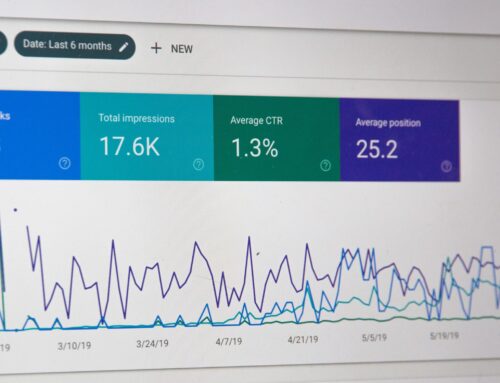Everyone has sat through terrible eLearning at some point in time. Things such as buttons that go nowhere, too many clicks, no clear navigation. All of this can affect learner engagement. These instructional designers never intend to create a bad experience. By utilizing Design Thinking principles, you can improve learner engagement for your training courses.
Design Thinking is a concept that has grown popular in the world of business. As the field of Learning and Development has continued to grow, the concept of Design Thinking has made its way into the design of employee training. Design Thinking looks at learning design from a learner first perspective. It is focused not just on solving a problem, but also on identifying the problem. According to Global Learning Strategist Keith Keating, Design Thinking helps you as a designer to take a step back and look at what the real problem or need might be. In many cases, learner engagement may be one of those problems. So, how can Design Thinking keep your learners engaged?
How can Design Thinking Encourage Learner Engagement?
 When designing eLearning that is learner centric, it is important to consider the context. For example, what types of devices are they using? What is their day to day work schedule like? When will they be including learning in their work day? If a learner sees that the training or learning is inconvenient or interferes with their normal schedule, they may not be as engaged in the learning or as willing to take part. It is also important to make sure that the learner knows why they need the training. By understanding why the training is important and how it might benefit them long term, the learner is more willing to actively participate in the training.
When designing eLearning that is learner centric, it is important to consider the context. For example, what types of devices are they using? What is their day to day work schedule like? When will they be including learning in their work day? If a learner sees that the training or learning is inconvenient or interferes with their normal schedule, they may not be as engaged in the learning or as willing to take part. It is also important to make sure that the learner knows why they need the training. By understanding why the training is important and how it might benefit them long term, the learner is more willing to actively participate in the training.
So, how does Design Thinking factor into this? One of the key principles in Design Thinking is Empathy. By empathizing with the learning population, you can observe what is important for them in their daily work and design an eLearning course that fits that population.
5 Phases of Design Thinking
 Design Thinking is made up of five phases, Empathy, Define, Ideate, Prototype, and Test.
Design Thinking is made up of five phases, Empathy, Define, Ideate, Prototype, and Test.
The first phase, Empathy, requires active engagement and passive reflection and observation of your target learners. It is in this stage that you use surveys, observations, interviews, and more, to determine what their need is in regards to training. It is during this phase that you look for a problem to be solved.
If Empathy is the stage in which you find a problem to be solved, then the second phase, Define, is where you lay out what the problem is. In this stage, you synthesize any of the data you’ve collected and look for patterns and relationships. It is in these data patterns that problems make themselves known. These could be problems related to why learners are not actively taking the training, getting the desired scores on training assessments, or why learners are not continuing training.
The third phase, Ideate, is when the solutions are born. It is during this stage that we take the training problem that we’ve defined and figure out a solution. This could be as simple as making sure that training is accessible to learners in an easy and convenient way or making training more relevant to their everyday work life.
The last two phases, Prototype and Test, are when the training solutions are designed, developed and implemented. Of course, once a training solution is launched, it must be monitored for more ideation and improvement to ensure that learners are engaged in the eLearning or training given and that learners are able to use the information in the way that was intended.
Tips on How to Reflect the Design Thinking Elements in your eLearning
 When you are designing an eLearning training course, the first step is to look at who you are designing the course for. Analyze your learner population to look for the best way to present the information to them and keep them motivated. At Digitec, we work with our customers to identify their target learners and come up with eLearning and training solutions that fit the context. This is achieved during our initial discovery phase and interviews and presented in a design strategy document.
When you are designing an eLearning training course, the first step is to look at who you are designing the course for. Analyze your learner population to look for the best way to present the information to them and keep them motivated. At Digitec, we work with our customers to identify their target learners and come up with eLearning and training solutions that fit the context. This is achieved during our initial discovery phase and interviews and presented in a design strategy document.
Defining the initial training problem is a crucial step. Look at your learner data from past training to identify any gaps. At Digitec we work with our customers to narrow down and define the problem to be solved. From there, we move into the Ideate stage.
In the Ideate stage, Digitec develops a course outline and design strategy guide to layout the initial solution. By doing this, you can better communicate what is needed in the training solution and how it could be designed to accommodate that context..
Taking the problem that you’ve defined and the solution you’ve laid out to the Prototype phase is key. While developing your prototype, keep in mind where the information is going to be presented. For example, are learners going to be taking the training via a computer or their smartphones? Are learners more interested in straightforward knowledge or are they more engaged with more interactivity? Here at Digitec, we often use gamification elements, interactive scenario design, and other features to match the need of learners in a variety of eLearning courses and allow the learners to practice and demonstrate mastery.
Once a training course is created and launched, it is important to continue to Test and Ideate your eLearning to continuously improve it for your learner audience. Don’t forget to survey your learners, so you can either prove or disprove your design decisions, so you can improve the course in the future.
Using Design Thinking is just one way to identify the best training solution to keep your learners engaged. If you’d like to learn more about how Digitec can help you increase your learner engagement, contact us to set up a free consultation. Since we’ve all sat through bad elearning, we’d love to help you bring great education and training to life!




